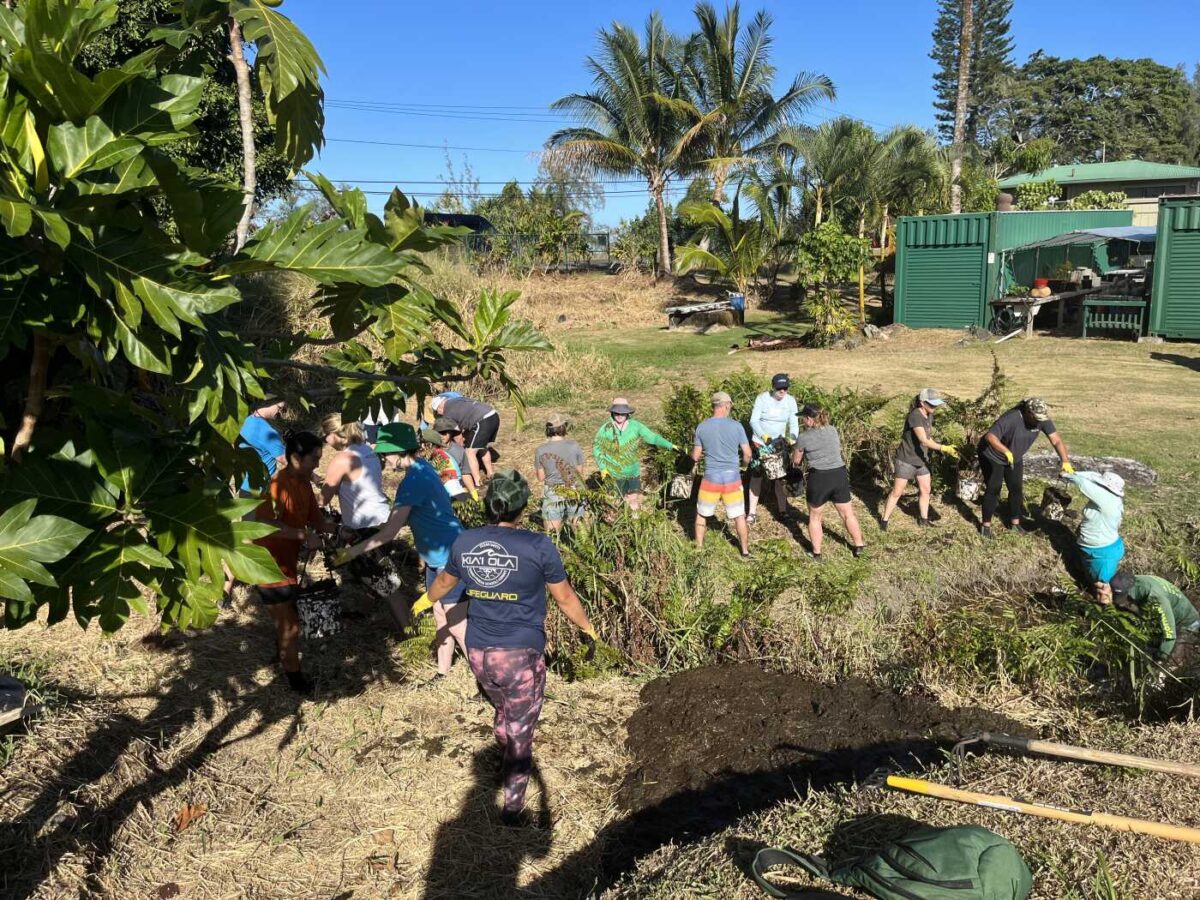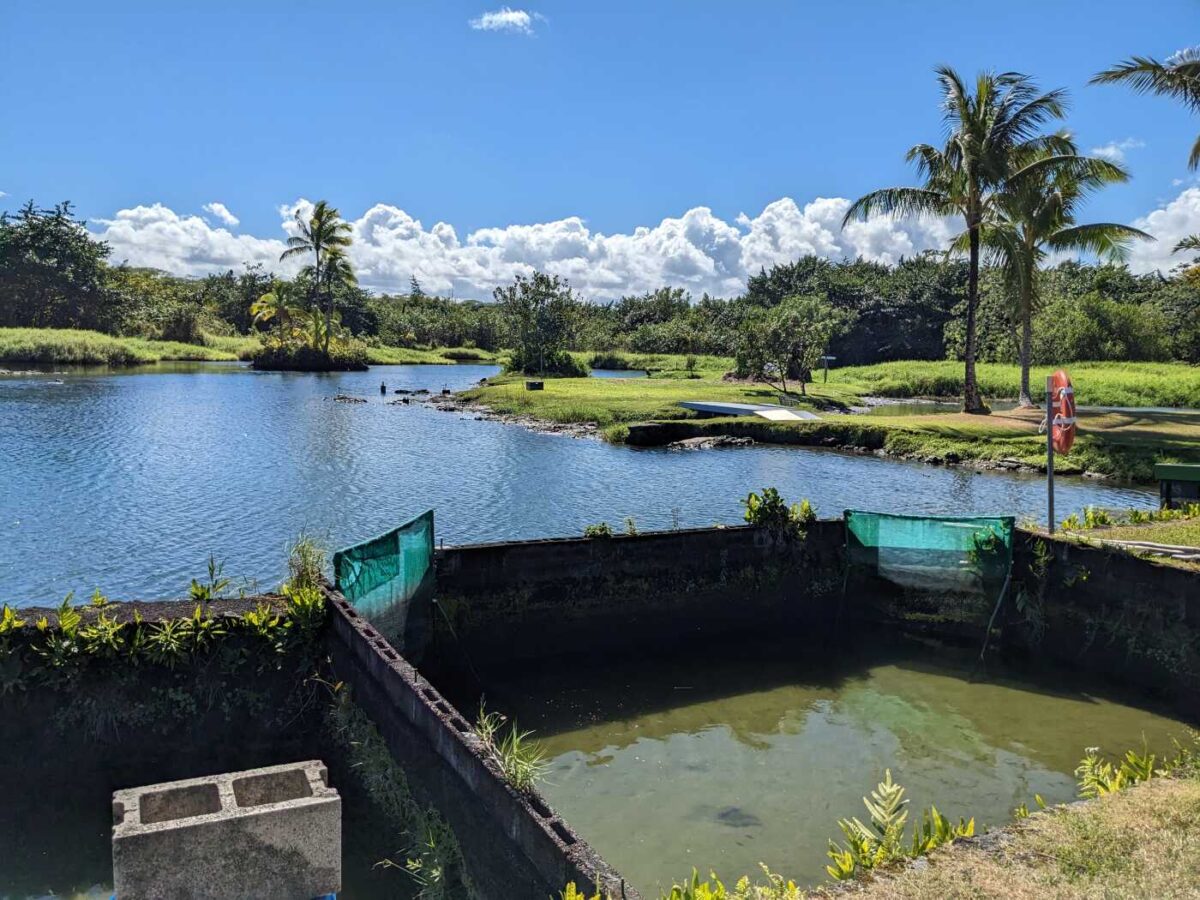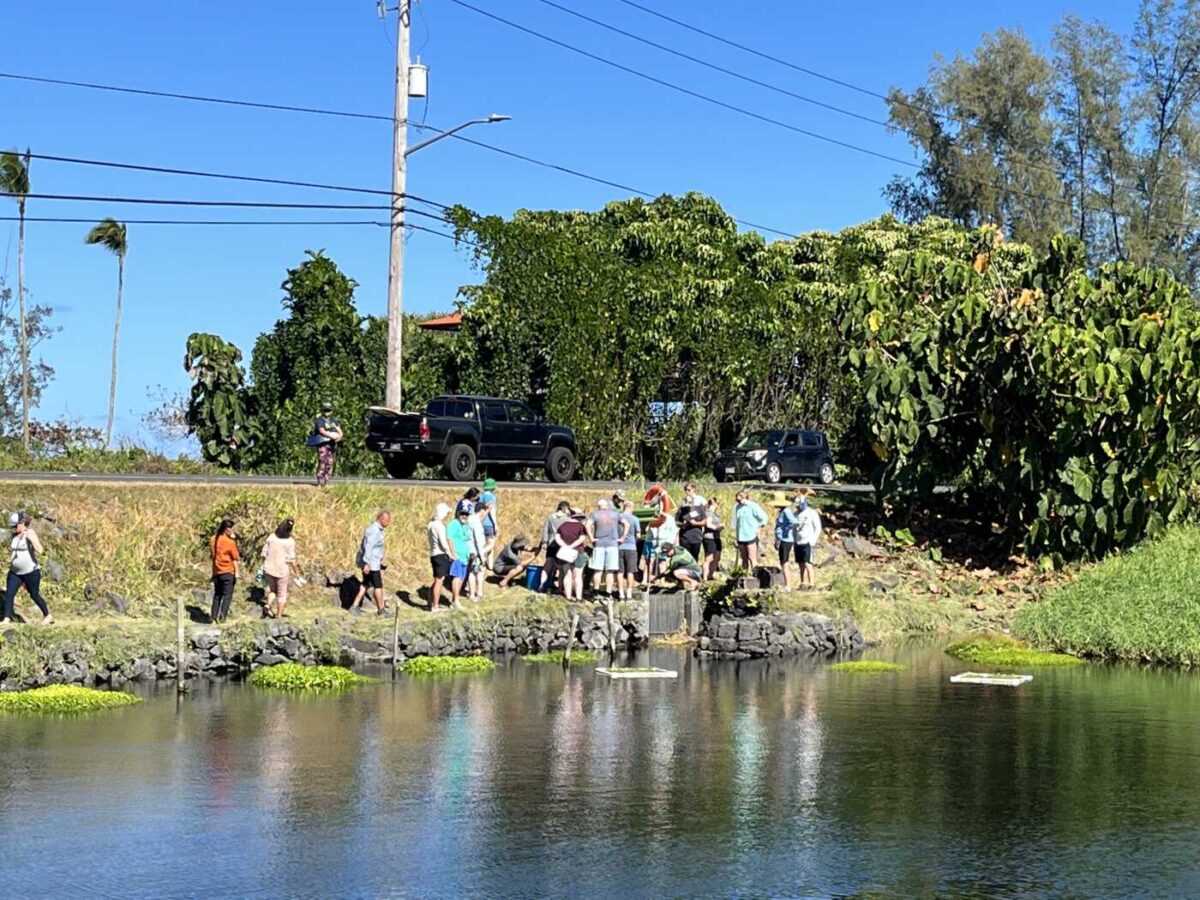
Restoration of loko iʻa is backbreaking labor, done by hand with buckets. Volunteers form a human train to dig out a pond, moving mud uphill, which stabilizes the bank once it dries in the sun. Mel Sanderson was down in the pond – in the blue shorts. Photo by Jeana Holer
By Melissa Sanderson
Blue Ocean Mariculture is the nation’s first commercial farm to raise fish in the open ocean. They accomplished this through close communication with local fishermen to select mutually agreeable species and location. BOM grows Hawaiian Kanpachi, also known as Almaco Jack (Seriola rivoliana), which can’t be harvested from wild populations because of ciguatera toxins from a parasite they catch as babies. Once large enough, the kanpachi move from the shoreside nursery to offshore net pens. The pens cover 90 acres in 200 feet of water just off the Kona coast. They can be fully submerged deep enough that vessels could drive over them. The local commercial fishermen are supportive of farming kanpachi, since it means one of their favorite fish is back on the menu. Read the full article here.

These farm raised Kanpachi fingerlings didn’t catch the parasite because their feed is controlled in the nursery. Photo by Meghan Massaua.

Baby kanpachi come from broodstock (adults) in pens like these. Wild-caught adults are fed a diet of frozen fish, squid, shrimp and supplements. Photo by Madelyn Smith.

This loko iʻa (traditional Hawaiian fishpond) in Hilo was reclaimed by volunteers. They work to keep the water clean and cultivate the algae that the fish like to eat. A loko iʻa acts like a refrigerator, providing fish to the community when they can’t get it elsewhere. Photo by Melissa Sanderson.

Fish come into the pond from the ocean. In this fish pond, they have to pass through a culvert under the road. A grate is put over the mouth of the pond. Once fish are big enough, they can’t escape, living in the pond until harvested. Photo by Jeana Holer.

One of the types of fish the loko iʻa hopes to cultivate is the Nenue. Here at Ocean Era they are experimenting with growing them in a hatchery. These 100-day old Nenue are also known as chubs. They eat algae, but taste like a snapper. Photo by Melissa Sanderson.
Feeding time is a frenzy. These broodstock kanpachi are hand-fed from above; we’re watching through a viewing window at ground level. Video by Melissa Sanderson.
| Harvest day at the net pens: Feeding and harvesting is done from a tender vessel using pipes that run from the boat, up the side of the net, and down the central pole. |
Kanpachi swimming in an offshore net pen are getting close to harvestable size.
